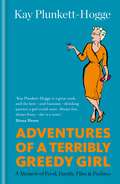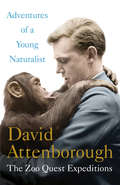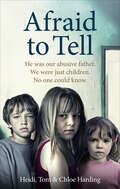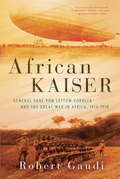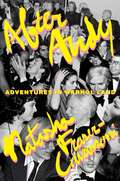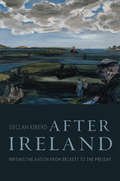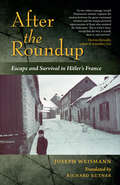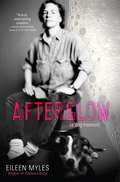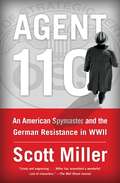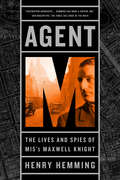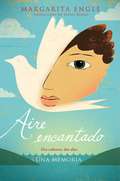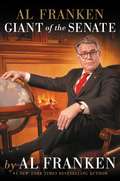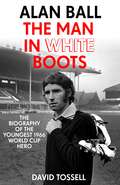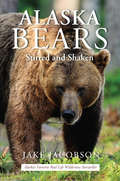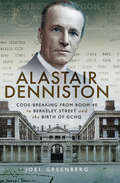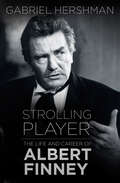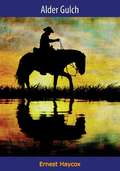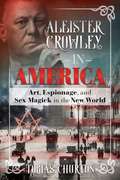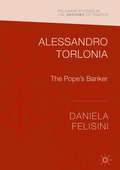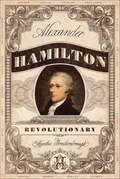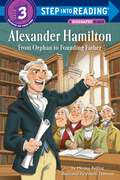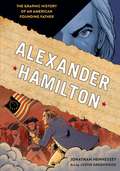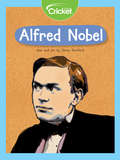- Table View
- List View
Adventures of a Terribly Greedy Girl: A Memoir of Food, Family, Film & Fashion
by Kay Plunkett-HoggeAs featured in the Sunday Express and Evening Standard Must Haves'...a heady and enchanting book and a manifesto of our times ...if you're interested in food, film, fashion or simply fantastic adventures to far-flung places, you'll want to devour Kay Plunkett-Hogge's Adventures of a Terribly Greedy Girl'.Metro'This eclectic memoir, with its evocative vignettes of life in some of the world's mostvibrant cities, is punctuated with mouthwatering recipes - everything from sashimi with Thai salsaverde to the perfect dry martini'.Daily Mail'...a romp through the life of one-time male model-booker Kay Plunkett-Hogge. There are recipes and checklists peppered among the riotous stories. Dip in and out or read on the train to brighten your commute - it's better than a Berocca fix (and far more entertaining'.delicious.magazine'[A] feisty, funny memoir, interspersed with personal recipes. Best enjoyed with a Martini'.Sainsbury's MagazineWith a dry martini in hand, Kay Plunkett-Hogge looks back at the happy accidents, regrettable errors and unexpected opportunities that led to a career as a food and drink writer, via stints in the worlds of fashion and film. It is a celebration of a tumbling through life, of mistakes, and opportunities laid bare. As you read, Kay shares 25 delicious recipes she discovered along the way, from her grandmother's apple crumble to sashimi with Thai salsa verde. Chapters include 10 Things I Learnt in New York, The Comfort of a Roast Chicken and What Would Martha Do? Joyful, witty and occasionally indiscreet, Adventures of A Terribly Greedy Girl is about the benefits of letting your curiosity trump your good sense.
Adventures of a Terribly Greedy Girl: A Memoir of Food, Family, Film & Fashion
by Kay Plunkett-HoggeWith a dry martini in hand, Kay Plunkett-Hogge looks back at the happy accidents, regrettable errors and unexpected opportunities that led to a career as a food and drink writer, via stints in the worlds of fashion and film. It is a celebration of a tumbling through life, of mistakes, and opportunities laid bare. As you read, Kay shares 25 delicious recipes she discovered along the way, from her grandmother's apple crumble to sashimi with Thai salsa verde. Chapters include 10 Things I Learnt in New York, The Comfort of a Roast Chicken and What Would Martha Do? Joyful, witty and occasionally indiscreet, Adventures of A Terribly Greedy Girl is about the benefits of letting your curiosity trump your good sense.
Adventures of a Young Naturalist: The Zoo Quest Expeditions
by David AttenboroughIn 1954, David Attenborough, a young television presenter, was offered the opportunity of a lifetime--to travel the world finding rare and elusive animals for the London Zoo's collection, and to film the expedition for the BBC for a new show called Zoo Quest.This is the story of those voyages. Staying with local tribes while trekking in search of giant anteaters in Guyana, Komodo dragons in Indonesia, and armadillos in Paraguay, he and the rest of the team contended with cannibal fish, aggressive tree porcupines, and escape-artist wild pigs, as well as treacherous terrain and unpredictable weather, to record the incredible beauty and biodiversity of these regions. Written with his trademark wit and charm, Adventures of a Young Naturalist is not just the story of a remarkable adventure, but of the man who made us fall in love with the natural world and taught us the importance of protecting it--and who is still doing so today.
Afraid to Tell
by Heidi Harding Tom Harding Chloe HardingHe was our abusive father.We were just children.No one could know.Heidi was 18 when she read her little sister Chloe’s diary, and discovered that they shared a terrible secret: they had both been abused by their father. After years of fear and isolation, Heidi knew she had to go to the police. For a long time, Chloe resented Heidi for forcing her to disclose what had happened when she wasn’t ready, while their brother, Tom, couldn’t understand how he had so misjudged his father, and at first he didn’t believe their tale. The truth threatened to destroy them all. This is the very honest story of three siblings, and how a man they trusted threatened to tear their family apart.
African Kaiser: General Paul von Lettow-Vorbeck and the Great War in Africa, 1914-1918
by Robert GaudiThe incredible true account of General Paul von Lettow-Vorbeck and his exploits in World War I Africa with the legendary "Schutztruppe." As World War I ravaged the European continent, a completely different theater of war was being contested in Africa. And from this very different kind of war, there emerged a very different kind of military leader...At the beginning of the twentieth century, the continent of Africa was a hotbed of international trade, colonialism, and political gamesmanship. So when World War I broke out, the European powers were forced to contend with each other not just in the bloody trenches—but in the treacherous jungle. And it was in that unforgiving land that General Paul von Lettow-Vorbeck would make history.With the now legendary "Schutztruppe" (Defensive Force), von Lettow-Vorbeck and a small cadre of hardened German officers fought alongside their fanatically devoted native African allies as equals, creating the first truly integrated army of the modern ageThe Lion of Africa is the almost-forgotten true account of Wiemar Germany’s military escapades on the dark continent. A story of thousand-mile marches through the harshest landscapes; of German officers riding bicycles into battle through the bush; of battleships hidden in jungle rivers teeming with crocodiles; of improbable Zeppelin voyages; of desperate men living off hippo lard and facing dangers in both man and nature.But mostly it is the story of von Lettow-Vorbeck—the only undefeated German commmander in the field during World War I, and the last to surrender his arms in final defeat.
After Andy: Adventures in Warhol Land
by Natasha Fraser-CavassoniAfter Andy is Natasha Fraser-Cavassoni’s insider's account of working in Andy Warhol’s studio and Interview magazine, and explores Warhol’s impact on the art world, pop culture, society, and fashion—and how his iconic status gave rise to some of our most influential tastemakers today. Natasha Fraser-Cavassoni met Andy Warhol when she was sixteen, and then on and off over the years before landing in New York City at the Andy Warhol Studio, or as she calls it, “Adventures in Warhol Land.” In this witty, page-turning account, she takes readers deep into the Pop artist’s world—as well as miles into the stratosphere of the socialites, fashion icons, film stars, rock legends, and art world powerhouses who could be found in his orbit—where she worked with Fred Hughes, Brigid Berlin, Vincent Fremont, and others who were once part of the Factory clan. As the last person hired at the studio before Warhol died in 1987, Fraser-Cavassoni saw firsthand the end of an era and the establishment of a global phenomenon. From the behind-the-scenes disagreements and the assessment of his estate, which included Interview magazine and his art inventory, to the record-breaking auction of his belongings and the publication of his diaries, Fraser-Cavassoni examines the immediate aftermath of Warhol’s death and his ever-growing impact, which ranged from New York to Los Angeles and throughout Europe. Interviews with key figures of the art world and dozens of Andy intimates make After Andy and its subject more relevant than ever today.
After Ireland: Writing the Nation from Beckett to the Present
by Declan KiberdPolitical failures and globalization have eroded Ireland’s sovereignty—a decline portended in Irish literature. Surveying the bleak themes in thirty works by modern writers, Declan Kiberd finds audacious experimentation that embodies the defiance and resourcefulness of Ireland’s founding spirit—and a strange kind of hope for a more open nation.
After the Roundup: Escape and Survival in Hitler's France
by Joseph WeismannA Jewish man recounts his experience as a little boy in Paris during World War II and the Holocaust, as well as his escape and survival in this memoir.On the nights of July 16 and 17, 1942, French police rounded up eleven-year-old Joseph Weismann, his family, and 13,000 other Jews. After being held for five days in appalling conditions in the Vélodrome d’Hiver stadium, Joseph and his family were transported by cattle car to the Beaune-la-Rolande internment camp and brutally separated: all the adults and most of the children were transported on to Auschwitz and certain death, but 1,000 children were left behind to wait for a later train. The French guards told the children left behind that they would soon be reunited with their parents, but Joseph and his new friend, Joe Kogan, chose to risk everything in a daring escape attempt. After eluding the guards and crawling under razor-sharp barbed wire, Joseph found freedom. But how would he survive the rest of the war in Nazi-occupied France and build a life for himself? His problems had just begun.Until he was 80, Joseph Weismann kept his story to himself, giving only the slightest hints of it to his wife and three children. Simone Veil, lawyer, politician, President of the European Parliament, and member of the Constitutional Council of France—herself a survivor of Auschwitz—urged him to tell his story. In the original French version of this book and in Roselyne Bosch’s 2010 film La Rafle, Joseph shares his compelling and terrifying story of the Roundup of the Vél’ d’Hiv and his escape. Now, for the first time in English, Joseph tells the rest of his dramatic story in After the Roundup.“As few others manage, Joseph Weismann’s memoir captures the tension between the great communal torment and the unique personal repercussions of those who endured the Holocaust. This is a boy’s story, except that boy is in hell, faces it, and survives.” —Thomas Keneally, author of Schindler’s List“Extraordinary . . . and timely. Joseph Weismann’s compelling account of his escape from an internment camp after the notorious Winter Velodrome roundup of Parisian Jews in July 1942 is both a vivid recreation of childhood (he was 11 years old when he spent a tenacious six hours crawling through a barbed wire fence to make his getaway) and a powerful insight into what it is like to be on the receiving end of the demonization of a race or religion.” —Peter Grose, author of A Good Place to Hide
Afterglow: A Dog Memoir
by Eileen Myles<P>This newest book paints a kaleidoscopic portrait of a beloved confidant: the pit bull called Rosie. <P>In 1990, Myles chose Rosie from a litter on the street, and their connection instantly became central to the writer’s life and work. During the course of their sixteen years together, Myles was madly devoted to the dog’s wellbeing, especially in her final days. Starting from the emptiness following Rosie’s death, Afterglow (a dog memoir) launches a heartfelt and fabulist investigation into the true nature of the bond between pet and pet-owner. Through this lens, we witness Myles’s experiences with intimacy and spirituality, celebrity and politics, alcoholism and recovery, fathers and family history, as well as the fantastical myths we spin to get to the heart of grief. <P>Moving from an imaginary talk show where Rosie is interviewed by Myles’s childhood puppet to a critical reenactment of the night Rosie mated with another pit bull, from lyrical transcriptions of their walks to Rosie’s enlightened narration from the afterlife, Afterglow (a dog memoir) illuminates all that it can mean when we dedicate our existence to a dog.
Agent 110: An American Spymaster and the German Resistance in WWII
by Scott Jeffrey MillerThe &“lively and engrossing&” (The Wall Street Journal) story of how OSS spymaster Allen Dulles built an underground network determined to take down Hitler and destroy the Third Reich.Agent 110 is Allen Dulles, a newly minted spy from an eminent family. From his townhouse in Bern, Switzerland, and in clandestine meetings in restaurants, back roads, and lovers&’ bedrooms, Dulles met with and facilitated the plots of Germans during World War II who were trying to destroy the country&’s leadership. Their underground network exposed Dulles to the political maneuverings of the Soviets, who were already competing for domination of Germany, and all of Europe, in the post-war period. Scott Miller&’s &“absorbing and bracing&” (The Seattle Times) Agent 110 explains how leaders of the German Underground wanted assurances from Germany&’s enemies that they would treat the country humanely after the war. If President Roosevelt backed the resistance, they would overthrow Hitler and shorten the war. But Miller shows how Dulles&’s negotiations fell short. Eventually he was placed in charge of the CIA in the 1950s, where he helped set the stage for US foreign policy. With his belief that the ends justified the means, Dulles had no qualms about consorting with Nazi leadership or working with resistance groups within other countries to topple governments. Agent 110 is &“a doozy of a dossier on Allen Dulles and his early days spying during World War II&” (Kirkus Reviews). &“Miller skillfully weaves a double narrative of Dulles&’ machinations and those of the German resistance&” (Booklist) to bring to life this exhilarating, and pivotal, period of world history—of desperate renegades in a dark and dangerous world where spies, idealists, and traitors match wits and blows to ensure their vision of a perfect future.
Agent M: The Lives and Spies of MI5's Maxwell Knight
by Henry HemmingSpying is the art of knowing who to trust-and who to betrayMaxwell Knight was perhaps the greatest spymaster in history, rumored to be the real-life inspiration for the James Bond character "M." He did more than anyone in his era to combat the rising threat of fascism in Britain during World War II, in spite of his own history inside this movement. He was also truly eccentric--a thrice-married jazz aficionado who kept a menagerie of exotic pets--and almost totally unqualified for espionage.Yet he had a gift for turning practically anyone into a fearless secret agent. Knight's work revolutionized British intelligence, pioneering the use of female agents, among other accomplishments. In telling Knight's remarkable story, Agent M also reveals for the first time in print the names and stories of some of the men and women recruited by Knight, on behalf of MI5, who were asked to infiltrate the country's most dangerous political organizations.Drawing on a vast array of original sources, Agent M reveals not only the story of one of the world's greatest intelligence operators, but the sacrifices and courage required to confront fascism during a nation's darkest time.
Aire encantado: Dos culturas, dos alas: Una Memoria
by Margarita Engle Alexis RomayIn this poetic memoir, which won the Pura Belpré Author Award and was named a Walter Dean Myers Award Honoree, acclaimed author Margarita Engle tells of growing up as a child of two cultures during the Cold War. En este poético libro de memorias—ganador del premio Pura Belpré de autor, finalista del premio de YALSA de no ficción y premio de honor Walter Dean Myers—la aclamada autora Margarita Engle recrea su infancia, que transcurrió a caballo entre dos culturas durante la Guerra Fría.Margarita is a girl from two worlds. Her heart lies in Cuba, her mother’s tropical island country, a place so lush with vibrant life that it seems like a fairy tale kingdom. But most of the time she lives in Los Angeles, lonely in the noisy city and dreaming of the summers when she can take a plane through the enchanted air to her beloved island. Words and images are her constant companions—sources of comfort when the children at school are not. Then a revolution breaks out in Cuba. Margarita fears for her far-away family. When the hostility between Cuba and the United States erupts into the Bay of Pigs Invasion, Margarita’s worlds collide in the worst way possible. How can the two countries she loves hate each other so much? And will she ever get to visit her beautiful island again? Margarita es una niña de dos mundos. Su corazón está en Cuba, la isla tropical de su mamá, un sitio tan exuberante, de una vida tan intensa, que parece el reino de un cuento de hadas. Pero la mayor parte del tiempo, vive en Los Ángeles, sola en la bulliciosa ciudad, soñando con los veranos, en los que puede montarse en un avión y viajar por el aire encantado a su amada isla. Las palabras y las imágenes son compañeras constantes, amistosas y reconfortantes, mientras que los niños en la escuela no lo son. Entonces estalla una revolución en Cuba. Margarita teme por su familia lejana. Cuando la hostilidad entre Cuba y Estados Unidos se desata en la invasión de Bahía de Cochinos, los mundos de Margarita chocan de la peor manera posible. ¿Cómo es posible que los dos países que ella quiere se odien tanto mutuamente? ¿Y podrá volver a visitar su hermosa isla de nuevo?
Al Franken, Giant of the Senate
by Al Franken<P>From Senator Al Franken - #1 bestselling author and beloved SNL alum - comes the story of an award-winning comedian who decided to run for office and then discovered why award-winning comedians tend not to do that.This is a book about an unlikely campaign that had an even more improbable ending: the closest outcome in history and an unprecedented eight-month recount saga, which is pretty funny in retrospect. <P>It's a book about what happens when the nation's foremost progressive satirist gets a chance to serve in the United States Senate and, defying the low expectations of the pundit class, actually turns out to be good at it. <P>It's a book about our deeply polarized, frequently depressing, occasionally inspiring political culture, written from inside the belly of the beast.In this candid personal memoir, the honorable gentleman from Minnesota takes his army of loyal fans along with him from Saturday Night Live to the campaign trail, inside the halls of Congress, and behind the scenes of some of the most dramatic and/or hilarious moments of his new career in politics. <P>Has Al Franken become a true Giant of the Senate? Franken asks readers to decide for themselves. <P><b>A New York Times Bestseller</b>
Alan Ball: The biography of the youngest 1966 World Cup Hero
by David TossellIt is a special footballer who wins the World Cup as a 21-year-old and ends a two-decade career as one of the most revered players in the history of four clubs. Former England captain Alan Ball was such a man: prodigy at Blackpool, youngest hero of 1966, Championship winner at Everton, British-record signing for the second time at Arsenal and veteran schemer for Southampton - not to mention footwear trend-setter. And all after being told he was too small to succeed in the game.Yet his years as a flat-cap wearing manager consisted mostly of relegation and promotion battles, some successful and some not, and plenty of frustration as he fought to produce winners in his own image and emulate the feats of his playing days. His life already touched tragically by the car crash that killed his father and the loss of his beloved wife Lesley to cancer, Ball died, aged only 61, after suffering a heart attack during a garden blaze.A decade on from his death, and drawing on interviews with family, friends and colleagues including Jimmy Armfield, Sir Geoff Hurst, George Cohen, Gordon Banks, Joe Royle, Mick Channon, Lawrie McMenemy, Francis Lee, George Graham, Frank McLintock, Matthew Le Tissier and many more, Alan Ball: The Man in White Boots is the definitive study of one of English football's most enduring figures.
Alaska Bears: Shaken and Stirred
by Jake JacobsonALASKA BEARS: Shaken and Stirred is a collection of 24 stories describing Jake's personal experience hunting and guiding for all the species of bears in Alaska. Bear biology, hunting techniques, cabin depredations and avoidance thereof, and other aspects of bear pursuits are detailed. These are true stories except for the names of some of the hunting guests from Jake's fifty years of living and hunting in Alaska.
Alastair Denniston: Code-Breaking from Room 40 to Berkeley Street and the Birth of GCHQ
by Joel Greenberg“The expertly researched biography of the man who created and led the British intelligence organization best known for cracking the Nazi’s codes.” —Midwest Book Review Some of the individuals who played key roles in the success of Bletchley Park in reading the secret communications of Britain’s enemies during the Second World War have become well-known figures. However, the man who created and led the organization based there, from its inception in 1919 until 1942, has, surprisingly, been overlooked—until now. In 1914 Alastair Denniston, who had been teaching French and German at Osborne Royal Navy College, was one of the first recruits into the Admiralty’s fledgling codebreaking section that became known as Room 40. There, a team drawn from a wide range of professions successfully decrypted intercepted German communications throughout the First World War. After the Armistice, Room 40 was merged with the British Army’s equivalent section—MI1—to form the Government Code and Cypher School (GC&CS). Initially based in London, from August 1939, GC&CS was largely located at Bletchley Park, with Alastair Denniston as its Operational Director. With the support and assistance of both the Denniston family and GCHQ, Joel Greenberg, author of Gordon Welchman: Bletchley Park’s Architect of Ultra Intelligence, has produced this absorbing story of Commander Alexander “Alastair” Guthrie Denniston OBE, CBE, CMG, RNVR, a man whose death in 1961 was ignored by major newspapers and the very British intelligence organization that was his legacy. “An enthralling account of Alastair Denniston and his contribution to modern electronic intelligence. This book follows from his excellent biography of another great of signals intelligence, Gordon Welshman.” —Fire Reviews
Albert Finney: A Well-Seasoned Life
by Gabriel Hershman‘Hershman has managed to gather a huge amount of information and distill it into a book that is not only respectful but full of insights into what makes this unstarriest of stars able to produce brilliant work without appearing to break a sweat.’ - Kathryn Hughes, Mail on SundayHe was a Salford-born, homework-hating bookie’s son who broke the social barriers of British film. He did his share of roistering, and yet outlived his contemporaries and dodged typecasting to become a five-time Oscar nominee and one of our most durable international stars. Bon vivant, perennial rebel, self-effacing character actor, charismatic charmer, mentor to a generation of working-class artists, a byword for professionalism, lover of horseflesh and female flesh – Albert Finney is all these things and more.Gabriel Hershman’s colourful and riveting account of Finney’s life and work, which draws on interviews with many of his directors and co-stars, examines how one of Britain’s greatest actors built a glittering career without sacrificing his integrity.
Alder Gulch
by Ernest HaycoxBLAZIN’ JUSTICEVirginia City, Montana. Gold fever struck hard in 1863, with miners pannin’ for nuggets up and down the length of nearby Alder Gulch. But a gang of guntoughs was ridin’ them roughshod. With the law lookin’ the other way, the sidewinders dealt out hot lead for a man shippin’ his poke or even carryin’ gold dust for his grubstake.Jeff Pierce had been on the hard dodge since Portland, until he staked his claim at Alder Gulch. As a favor, he carried another miner’s poke through the forty miles of danger to Bannack, only to find that the scummy gunhawks had filled the old-timer with buckshot. Now the varmints had Pierce as a marked man. The gang was fixin’ for a showdown, but they’d be a mite less cocky if they knew the charge he was up for—murder!“Ernest Haycox is a master and ALDER GULCH is one of his best.”—Dallas Times Herald
Aleister Crowley in America: Art, Espionage, and Sex Magick in the New World
by Tobias ChurtonAn exploration of Crowley’s relationship with the United States • Details Crowley’s travels, passions, literary and artistic endeavors, sex magick, and psychedelic experimentation • Investigates Crowley’s undercover intelligence adventures that actively promoted U.S. involvement in WWI • Includes an abundance of previously unpublished letters and diaries Occultist, magician, poet, painter, and writer Aleister Crowley’s three sojourns in America sealed both his notoriety and his lasting influence. Using previously unpublished diaries and letters, Tobias Churton traces Crowley’s extensive travels through America and his quest to implant a new magical and spiritual consciousness in the United States, while working to undermine Germany’s propaganda campaign to keep the United States out of World War I. Masterfully recreating turn-of-the-century America in all its startling strangeness, Churton explains how Crowley arrived in New York amid dramatic circumstances in 1900. After other travels, in 1914 Crowley returned to the U.S. and stayed for five years: turbulent years that changed him, the world, and the face of occultism forever. Diving deeply into Crowley’s 5-year stay, we meet artists, writers, spies, and government agents as we uncover Crowley’s complex work for British and U.S. intelligence agencies. Exploring Crowley’s involvement with the birth of the Greenwich Village radical art scene, we discover his relations with writers Sinclair Lewis and Theodore Dreiser and artists John Butler Yeats, Leon Engers Kennedy, and Robert Winthrop Chanler while living and lecturing on now-vanished “Genius Row.” We experience his love affairs and share Crowley’s hard times in New Orleans and his return to health, magical dynamism, and the most colorful sex life in America. We examine his controversial political stunts, his role in the sinking of the passenger ship Lusitania, his making of the “Elixir of Life” in 1915, his psychedelic experimentation, his prolific literary achievements, and his run-in with Detroit Freemasonry. We also witness Crowley’s influence on Scientology founder L. Ron Hubbard and rocket fuel genius Jack Parsons. We learn why J. Edgar Hoover wouldn’t let Crowley back in the country and why the FBI raided Crowley’s organization in LA. Offering a 20th-century history of the occult movement in the United States, Churton shows how Crowley’s U.S. visits laid the groundwork for the establishment of his syncretic “religion” of Thelema and the now flourishing OTO, as well as how Crowley’s final wish was to have his ashes scattered in the Hamptons.
Alessandro Torlonia: The Pope’s Banker (Palgrave Studies in the History of Finance)
by Daniela FelisiniThis book provides a vivid biography of a towering Italian banker, pioneer and entrepreneur. It weaves the entrepreneurial ventures of Alessandro Torlonia (1800-1886) through the narratives of business and politics in the Nineteenth century, the growth of European financial markets and the decline of Papal power during the Italian Risorgimento. The discussion is founded in rigorous historical research using original sources such as the Archivum Secretum Vaticanum papers and other official documents; the archives of the Torlonia family, and of the Rothschild bank in Paris; memoirs; correspondences, and newspapers. Through this book readers learn that Alessandro Torlonia was a man of many faces, who was one of the most complex and influential characters of Italian economic life in the nineteenth century. Felisini also provides an expert critique of the financial history of the papacy: an area of heightened interest given the notoriety of relations between the Holy See and its bankers in the twentieth and twenty-first centuries. Focal topics such as the history of European elites and the history of European financial markets will have an interdisciplinary appeal for scholars and researchers.
Alexander Graham Bell Answers the Call
by Mary Ann FraserWell before Alexander Graham Bell invented the telephone, Aleck (as his family called him) was a curious boy, interested in how and why he was able to hear the world all around him. His father was a speech therapist who invented the Visible Alphabet and his mother was hearing impaired, which only made Aleck even more fascinated by sound vibration and modes of communication. Naturally inquisitive and inclined to test his knowledge, young Aleck was the perfect person to grow up in the Age of Invention. As a kid he toyed with sound vibrations and began a life of inventing. This in-depth look at the life and inspiration of the brilliant man who invented the tele-phone is sure to fire up the imaginations of young readers who question why and how things work. Driven by curiosity and an eagerness to help others, Aleck became a teacher for the deaf. His eventual invention of the telephone proved that he never stopped thinking big or experimenting with sound.Backmatter includes more information about Bell&’s inventions, a timeline of his life, a bibliography, and sources for further learning.
Alexander Hamilton, Revolutionary
by Martha BrockenbroughComplex, passionate, brilliant, flawed—Alexander Hamilton comes alive in this exciting biography.He was born out of wedlock on a small island in the West Indies and orphaned as a teenager. From those inauspicious circumstances, he rose to a position of power and influence in colonial America. Discover this founding father's incredible true story: his brilliant scholarship and military career; his groundbreaking and enduring policy, which shapes American government today; his salacious and scandalous personal life; his heartrending end.Richly informed by Hamilton's own writing, with archival artwork and new illustrations, this is an in-depth biography of an extraordinary man.
Alexander Hamilton: From Orphan to Founding Father (Step into Reading)
by Monica KullingFans of the Broadway musical Hamilton and American history lovers will want to share this illustrated biography of Alexander Hamilton with their young readers. Did you know that one of our Founding Fathers was not born in America? An orphan from the West Indies, Alexander Hamilton came to the colonies and played an important role in the Revolutionary War, rising to become General George Washington&’s right-hand man. But his accomplishments don&’t stop there! He helped obtain the ratification of the Constitution; he was America&’s first secretary of the treasury; and he established the first national bank and the U.S. Mint. A man of ambition, loyalty, and principle, he is now being celebrated as the prominent patriot he was. Step 3 Readers feature engaging characters in easy-to-follow plots about popular topics—for children who are ready to read on their own.
Alexander Hamilton: The Graphic History of an American Founding Father
by Jonathan HennesseyA graphic novel biography of the American legend who inspired the hit Broadway musical Hamilton. Alexander Hamilton was one of the most influential figures in United States history—he fought in the Revolutionary War, helped develop the Constitution, and as the first Secretary of the Treasury established landmark economic policy that we still use today. Cut down by a bullet from political rival Aaron Burr, Hamilton has since been immortalized alongside other Founding Fathers such as George Washington and Thomas Jefferson—his likeness even appears on the ten-dollar bill. In this fully-illustrated and impeccably researched graphic novel-style history, author Jonathan Hennessey and comic book illustrator Justin Greenwood bring Alexander Hamilton&’s world to life, telling the story of this improbable hero who helped shape the United States of America.
Alfred Nobel
by James RumfordDid you know the Nobel Prize is named after the man who invented dynamite? Learn all about the life of Alfred Nobel, who grew up in a desperately poor family.
